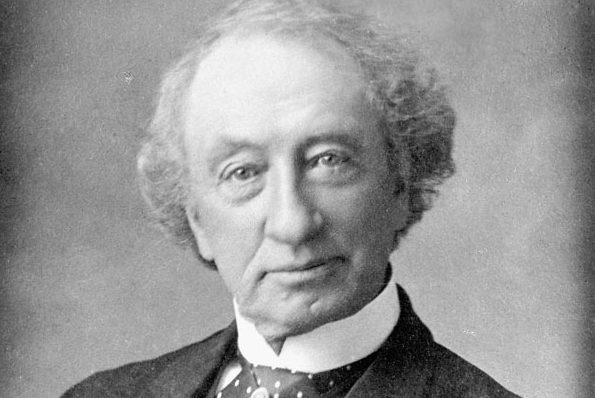
HE left his native Scotland to forge a new nation.
But the achievements of Sir John A Macdonald, as the first prime minister of Canada, are under scrutiny on both sides of the Atlantic.
In 1968 a cairn in his memory was unveiled in Rogart, Sutherland, where his grandparents lived.
It will remain in place despite a statue of him in Victoria, the capital of British Columbia, being removed last week because of his links to “colonial violence”.
Macdonald, who died in 1891, was behind several policies which discriminated against the native Canadian population, including the forcible removal of children from their families.
The historical scandal has been met with a measured response in Rogart, where the cairn will remain but Macdonald’s memory is no longer a source of such untarnished pride.
Local historian and author John Macdonald, 82, who believes he may be a distant relative of the former Canadian PM, was in the crowd when John Diefenbaker, a former Canadian PM, unveiled the cairn.
He said: “We became aware quite recently his record as prime minister was not something to be proud of. Until then he was highly regarded. It was different times and attitudes.
“The cairn was unveiled by the former prime minister of Canada and I was there.
“The Rogart Heritage Society used to raise the Canadian flag at the cairn every spring and take it down every autumn.
“We made quite a big ceremony of it for a while but that was before we were aware of the downside of it.”
Macdonald was born in Glasgow in 1815 and his parents then emigrated to Canada, where he became prime minister in 1867.
His divisive track record as a colonialist was revealed in a 2013 book, Clearing The Plains, about the persecution of Aboriginal Canadians.
It told how he reneged on a deal to pay the indigenous people for building a railway across the prairies.
He was also behind the 1876 Indian Act which led to 100,000 native Canadian children being taken from their families and sent to residential institutions where abuse was rife.
The revelations triggered protests in Canada, and officials in Victoria removed his statue which had been standing outside the city hall for 37 years.
The city’s mayor, Lisa Helps, said: “We do not propose to erase history but rather to tell this complex and painful chapter of Canadian history in a thoughtful way.”
But there are no plans to remove the Highland cairn which was erected on the site of Macdonald’s grandparents’ home.
Canadian-born Rogart resident Alasdair Mearns was taught in school that Macdonald was a “great fellow” but discovered the dark side of his legacy when he read Clearing The Plains.
He said: “From the perspective of native Canadians, he was just another colonialist who did everything he could to stamp the Aboriginal Canadians out, as well as steal their land and resources.
“That’s not what we were taught in schools, we were taught that he was this great fellow who pulled the country together in the face of US expansionism and wasn’t he a wonderful man.
“From that point of view, yes he was but the rest of it was all whitewashed,” he said.

Enjoy the convenience of having The Sunday Post delivered as a digital ePaper straight to your smartphone, tablet or computer.
Subscribe for only £5.49 a month and enjoy all the benefits of the printed paper as a digital replica.
Subscribe